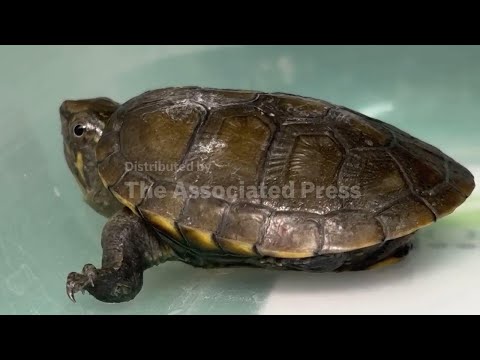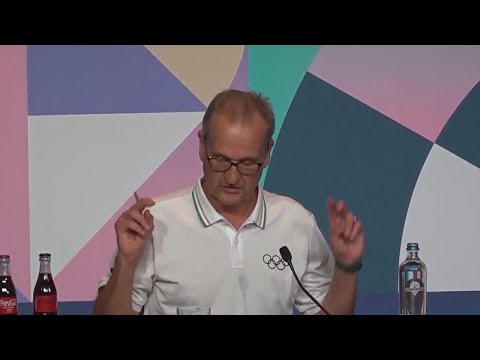(16 Sep 2025)
ASSOCIATED PRESS
Guadalajara – 11 September 2025
1. Various of the newly bred Vallarta turtle (Kinosternon vogti)
2. SOUNDBITE: (Spanish) Ricardo Dávalos, bird and reptile biologist, Guadalajara Zoo
"Well, this is the first birth of a Vallarta Turtle outside its natural habitat. It’s the first recorded birth of this species here in Mexico under professional care. This species was just discovered in 2018."
3. Various of Vallarta turtle’s eggs being measured, these were not viable eggs
4. SOUNDBITE (Spanish) Jordan Meza, veterinarian, Guadalajara Zoo
"One of the main challenges we encountered was the fact that we realized this species had very low fertility. This is speaking about the number of eggs laid, but not all eggs are fertile, regardless of the lack of studies or general knowledge about incubation. It’s about knowing whether or not individuals are fertile."
5. Various close of the baby Vallarta turtle
6. SOUNDBITE (Spanish) Ricardo Dávalos, bird and reptile biologist, Guadalajara Zoo
"One of the main characteristics of this turtle is that it is the smallest species in the world. It has a yellow spot on its nose, very striking in the case of males. In the case of the females, that scale, that nose shield is brownish-brown. It can have shades like cream, but it will never resemble the yellow of the male."
7. Newly born Vallarta turtle in its tank
8. Member of staff taking a photo of the turtle
9. SOUNDBITE (Spanish) Jordan Meza, veterinarian, Guadalajara Zoo
"The adjustments we had to make for this specimen or for the baby turtle were designating a space where we could control the humidity, or in this case, the water space. We could provide hiding places for the animal so it feels safe, because these animals spend a lot of time hiding. So, we designed these hiding places so it would feel a little calmer and not be so scared when we got close to it."
10. Various of the turtle in it’s tank and being handled
11. SOUNDBITE (Spanish) Ricardo Dávalos, bird and reptile biologist, Guadalajara Zoo
"To achieve reproduction, we had to perform artificial incubation of this Vallarta turtle. The eggs were removed from the site where they were laid. They were incubated in equipment where we controlled the temperature and humidity. We had to subject them to a process of climatic stress that is characteristic of this species in its natural state. And that’s what helped us achieve the birth of this species."
12. Older Vallarta female turtles being handled for x rays
13. SOUNDBITE (Spanish) Jordan Meza, veterinarian, Guadalajara Zoo
"With the passage of time depending on periods the egg goes through, we realize if they make it, or are on the way to being generated or to fully form the development of the embryo, or there comes a point in which we have no development or (realise) that development simply never occurred."
14. Older female turtles being handled for x rays
15. SOUNDBITE (Spanish) Ricardo Dávalos, bird and reptile biologist, Guadalajara Zoo
16. Older female turtles being x-rayed
17. SOUNDBITE (Spanish) Jordan Meza, veterinarian, Guadalajara Zoo
"I feel this is something that motivates us greatly to continue with this development, to keep working with this species, and to focus even more now, knowing that we can achieve its birth. Knowing that if we continue along this path, we’ll obtain more and more and, at some point, help repopulate or increase the number of specimens we have of this species."
16. Zoo personnel looking at x-rays of the turtles on a laptop
STORYLINE:
LEADIN
STORYLINE:
Find out more about AP Archive: http://www.aparchive.com/HowWeWork
Twitter: https://twitter.com/AP_Archive
Facebook: https://www.facebook.com/APArchives
Instagram: https://www.instagram.com/APNews/
You can license this story through AP Archive: http://www.aparchive.com/metadata/youtube/6654150a515d4040846d8c048c29608e
Author: AP Archive
Go to Source
News post in September 21, 2025, 3:02 pm.
Visit Our Sponsor’s:
News Post In – News





